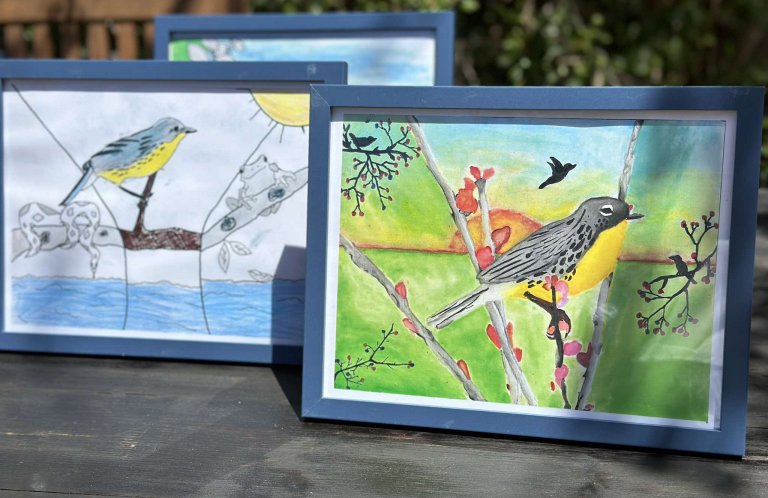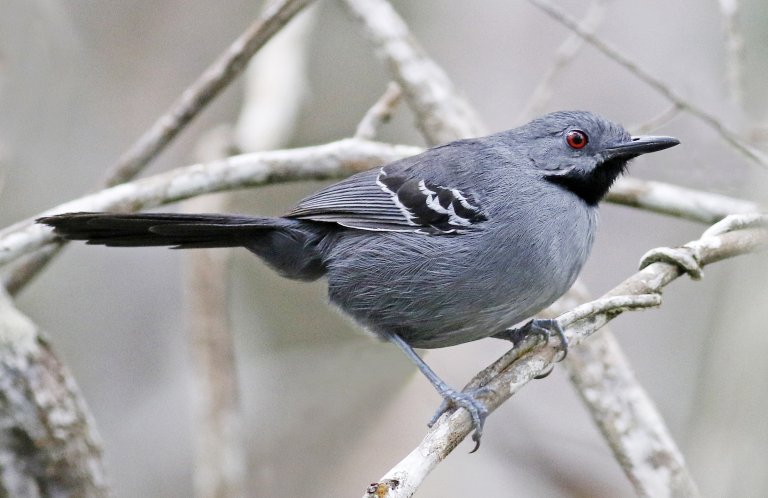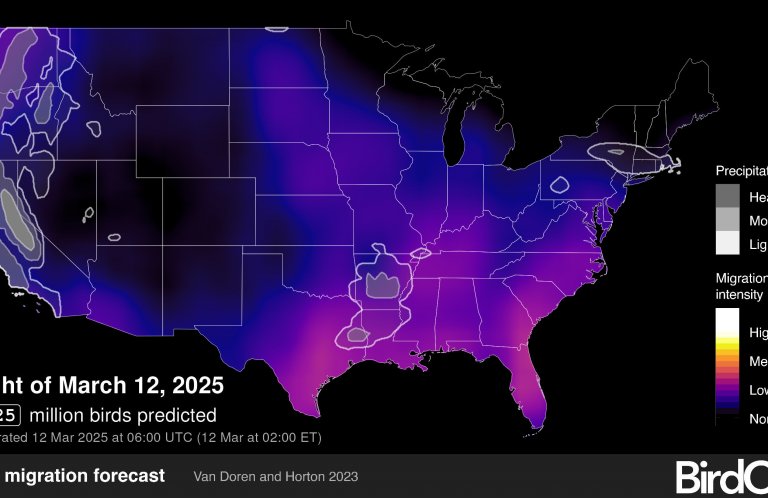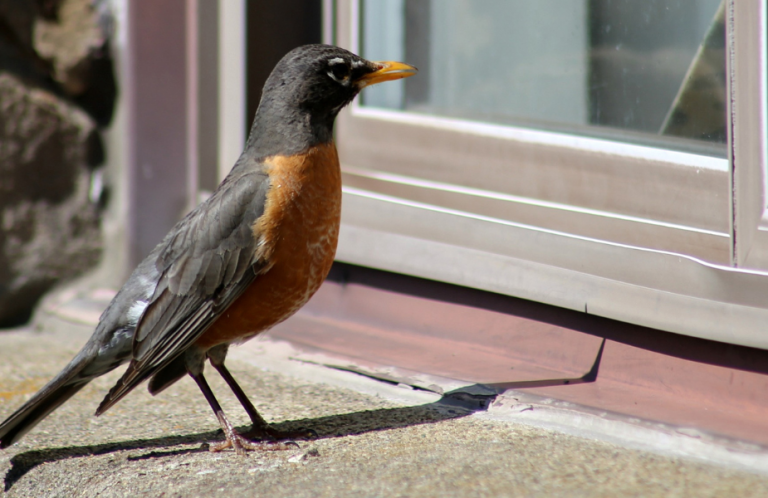A Tale of Two Marsh Birds
Imagine keeping your eye on birds across 1,500 miles, from the mangroves of Puerto Rico to Maine marshes. That's the purview of the Atlantic Coast Joint Venture (ACJV), a partnership formed in 1988 that coordinates marsh-bird conservation along the entire U.S. East Coast and beyond.
The ACJV brings together dozens of partner groups, including American Bird Conservancy (ABC), to conserve dozens of declining species.
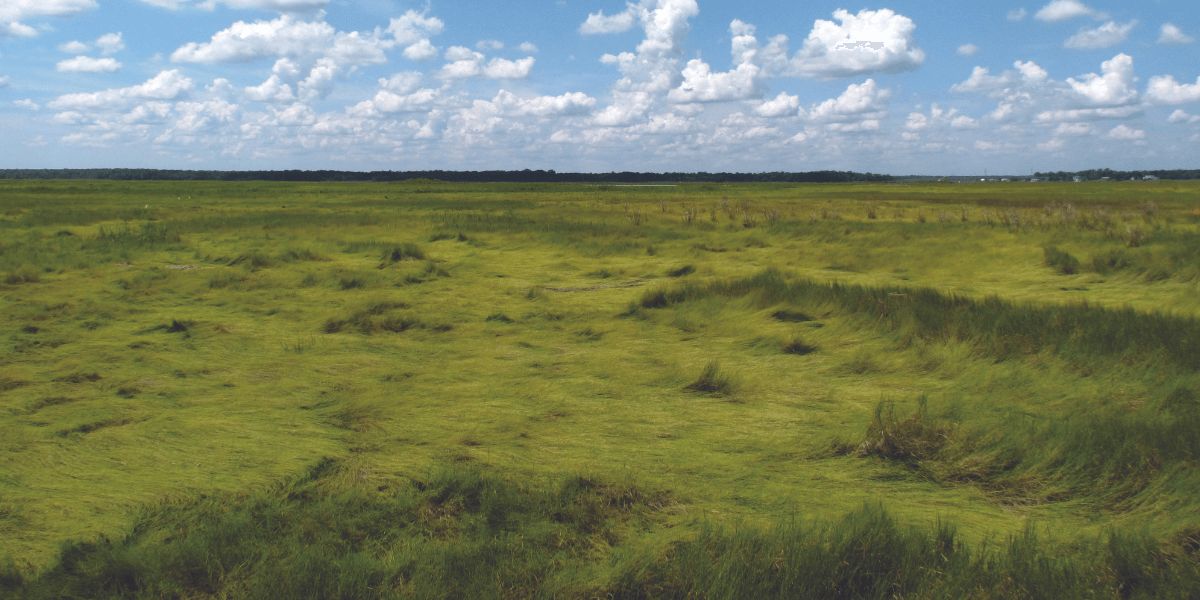
Seven years ago, the group had an epiphany: “We'd been extending ourselves a mile wide and an inch deep,” says Aimee Weldon, who joined as the ACJV Coordinator around that time. With many birds known to be in decline, a sense of urgency spurred Weldon, the ACJV Management Board, and her colleagues to develop a more targeted strategy, to pinpoint the most vulnerable species and focus ACJV efforts where needed most. To start, she and her team sought out experts across the region, requesting their feedback on the top birds in need of greater conservation attention.
Once names rolled in, the birds and ecosystem in most jeopardy quickly drew into focus. “The whole salt marsh suite of birds was rising to the top,” Weldon says. “This was a vulnerable population of birds that wasn't getting the attention it needed given the threats it was facing.”
Front and center on the “troubled” list sat two legendary skulkers — the Saltmarsh Sparrow and the Eastern Black Rail. The fates of these low-profile birds depend on saving remaining salt marshes before they disappear beneath the waves. The ACJV has since mobilized federal, state, nonprofit, and private landowner partners to ensure that these usually “invisible” birds don't vanish for real. The ensuing work revealed that what's needed is not just blanket protections of habitat, but also repairs to “broken systems,” plus preparation for the effects of climatic change. New efforts are just now kicking off that put theory into action to change the fortunes of the salt marsh and its unique birds.
A ‘String of Pearls' in Trouble
Weldon describes the marshes where Saltmarsh Sparrows and Eastern Black Rails spend their lives as a “unifying string of pearls” that connects nearly all of the states for which the ACJV is responsible. But she is acutely aware that one by one, those pearls are disappearing. Over the last few centuries, the area covered by salt marshes in the U.S. has been halved, with marsh after marsh filled in for agriculture or drained for coastal development. Those that remain face the clear and present danger of coastline change.
This dramatic loss of habitat has been accompanied by the dramatic decline of the sparrow, the rail, and many other species. (See sidebar.) True to its name, the Saltmarsh Sparrow lives out its entire annual life cycle in salt marshes within the ACJV's area. The Eastern Black Rail, a subpopulation of a secretive species once found from coastal Massachusetts down to southern Florida, has disappeared from New England and is now relegated to dwindling and scattered pockets of remaining habitat. It was listed as Threatened under the Endangered Species Act in 2020.
These birds don't just occupy any part of a salt marsh: Both depend upon what is known as the “high marsh,” the part of a salt marsh that only floods during the highest of tides.
Unfortunately, these areas face the greatest threat due to sea level rise, and past habitat degradation has come back to haunt many that remain. It turns out, coastal wetlands are not always as pristine as they might appear. In fact, most remaining salt marshes have been heavily modified.
In the Northeast, for instance, many were scored with a series of drainage ditches in the 1930s in an attempt to control mosquito populations. As sea levels rise, water more frequently overtops the berms along the ditch edges where it remains trapped instead of released, creating pools of standing water that destroy high marsh habitat. Farther south, in places like South Carolina, extensive marshes were filled in, for example, for tree farms or turned into impoundments for rice plantations in the 1800s, then duck hunting in the 1900s. GIS and other mapping technologies are still revealing just how much humans have made their mark on the coastal landscape.
The U.S. East Coast is particularly low lying, and even sinking in some places, so it is experiencing sea level rise at rates higher than the global average. These impacts are exacerbated by the centuries of marsh modifications. As a result, over the last few decades, thousands of acres once covered in salt marsh grass converted to open water.
The good news is that it might be possible to heal scars from human-made ditches and ponds, restore marsh resiliency and assist the marshes' migration inland, away from the ocean's advance. Salt marshes are naturally dynamic ecosystems; they can adapt with our help. Restoring the natural hydrology of these systems will be a monumental undertaking requiring a large-scale approach, but that's what's needed to give the Saltmarsh Sparrow and Eastern Black Rail and their ecosystem a shot at long-term survival.
Saltmarsh Sparrows: Time and Tide Wait for No Bird
The aptly named Great Marsh in Massachusetts is the largest stretch of intact salt marsh north of Long Island. At 16,000 acres (about 25 square miles), it spans an area larger than the city of Providence, Rhode Island. In this relatively flat landscape, a difference of mere inches can completely change what sorts of vegetation grow. There, Salt Hay (Spartina patens) grows out of stretches of soil raised a couple of inches above sea level, giving the appearance of floating meadows.
“If you walk in the high marsh, it is like walking in the most beautiful meadow you've ever seen,” says Nancy Pau, a wildlife biologist with the U.S. Fish and Wildlife Service, whose work in Massachusetts forms an essential part of the ACJV salt marsh conservation strategy. “I call it a picnic field because you can literally sit down and have picnics, and you don't get wet.”
These grasses are where Saltmarsh Sparrows come to breed, taking advantage of the safety provided by those precious inches of elevation and the cover of the soft Salt Hay. The colorful sparrows, their heads patched in orange, chocolate, and gray, are accompanied by more than 60 other breeding bird species, all of which rely upon food and shelter provided by this rich ecosystem.
No other bird in its habitat is quite so attuned to the tides as the Saltmarsh Sparrow. In spring, females of this species build their nests, lay their eggs, and raise their chicks all within a roughly 26-day window nestled snugly between the month's highest tides. Nests are placed at a very specific height, just higher than most tides will reach, but low enough to be hidden from aerial predators' view.
Until recently, only large “king tides” would reach Saltmarsh Sparrow nesting places. But now in the Great Marsh “it might be flooded five days out of the month instead of two days out of the month,” Pau says. Even a seemingly small change can mean the difference between life and death for Saltmarsh Sparrow chicks, which will drown if the tide reaches them before they have the ability to climb or fly to safety.
Every Saltmarsh Sparrow on the planet breeds between coastal Maine and Virginia, where sea level rise is three to four times higher than the global average. Across the range, this bird's population has dropped by a staggering 90 percent since 1998, averaging a decline of 9 percent annually. The species could be extinct in the next 50 years if conservationists can't restore and protect enough salt marsh.
Even in the Great Marsh, which looks healthy and intact when you're picnicking on the Salt Hay, things aren't exactly what they seem. “For the longest time, we thought that marshes in Massachusetts were unaltered except for some mosquito ditches,” Pau says.
They were wrong. Field inspections and historical research on old haying methods revealed that farmers had introduced hundreds of berms and ditches onto the landscape that had partially healed over, but which have created patches of slight elevation that trap water as tides get higher. These older ditches, meant to dry out the land for seed-sowing, were merely less obvious than ditches dug by the Civilian Conservation Corps in the 1930s to drain the marsh with the intent of keeping down mosquito populations. Both kinds have built up sediment over time. Now, instead of facilitating water's drainage, they block water from draining it, creating “mega-pools.” It turns out, there are up to ten times more ditches than scientists had originally thought in the Great Marsh, and the story has been similar across the Northeast. But Pau and others are fighting back.
“There were a lot of different efforts that started as individual efforts as people were seeing mega-pools forming,” Pau says. “Various people were testing different techniques, and now we're converging.”
Pau and her colleagues in Massachusetts are teaming up with people across New England under the guidance and support of the ACJV, scaling up habitat restoration and enhancement techniques that show the most promise. In the Great Marsh, for example, conservationists are creating tiny openings in mega-pools where water gets trapped, to jump-start the formation of natural creeks.
They also harvest Salt Hay and lay it down in layers in the lanes of the old ditches, fast-tracking the buildup of peat. This fills ditches within a few years, mimicking a natural process to keep pools from forming. So far, these techniques — called runneling and ditch remediation — have been used mainly in small pilot projects, but soon, they will be scaled up to thousands of acres.
“The exciting thing is that all the conservation organizations are on board,” Pau says. “This has become a priority for everyone — not just to save the Saltmarsh Sparrow, but because the communities around here know they rely on the marshes for storm protection and the socio-economic value they provide,” including as recreational areas and fish and shellfish nurseries.
Elsewhere, conservationists are depositing sediment in the marsh to raise it just an inch or two to give Saltmarsh Sparrows back their ideal elevation for raising chicks. And, where possible, they are helping marshes migrate inland, away from the rising seas. In the Blackwater National Wildlife Refuge in Maryland, for instance, conservationists are removing dead standing trees killed by saltwater inundation (known as “ghost forests”) to make it easier for marsh grasses to colonize the space before less desirable vegetation can creep in.
Only time will tell if these efforts will pay off for the Saltmarsh Sparrow. For the Eastern Black Rail, biologists must get even more creative to find short-term solutions. Farther south along the coast, they are crafting impoundments to create carefully controlled patches of marsh with just the right amount of water.
Black Rails: Just Add Water (But Not Too Much)
In a patch of coastal salt marsh north of Charleston, South Carolina, amidst the buzz of insects and clattering calls of Clapper Rails, wildlife biologist Christy Hand and her colleagues at the South Carolina Department of Natural Resources have set up an irrigation system unlike any that have come before it. The system may not impress at first sight, but it's brilliant in its simplicity: A stretch of black tubing snakes its way through about 2.5 acres of marsh grass, a small water pump attached to one end. When the pump is turned on, water flows through the tube and seeps out of small punctures spaced at regular intervals.
This pioneering project aims to help one of North America's most mysterious creatures, that “most secretive of the secret marsh birds,” the Eastern Black Rail. But installing this “simple” system hasn't been easy — getting to the site involves a ride on a pontoon boat, followed by a truck journey on bumpy roads, followed by a short hike over spongy ground in knee-high rubber boots. The mosquitoes are so thick that a special mesh-lined, hooded jacket is required to keep hundreds of whiny insects from making a meal out of you. But to the conservationists working on the task, just about any hardship is worth it. Because there's a real sense that time is running out. “I don't want Black Rails to blink out in the state on my watch,” Hand says. “That's what I'm worried about.”
This dusky, sparrow-sized bird is in critical danger of vanishing from the state, just as it has from the northern part of its range. In South Carolina, its last strongholds are, notably, in highly altered patches of marsh. In these places, enslaved people created dikes and installed wooden sluices called rice trunks in the 19th century for agriculture, to control water flow. Later, in the early 20th century, such areas were managed by wealthy landowners for duck hunting. Today, many of the old estates are now wildlife preserves, and the sluices enable wildlife managers to control water flow and craft micro-habitats for water birds.
The new irrigation project launched this summer at one such site, once owned by industrialist Tom Yawkey, is situated on a patch of high marsh within this altered system. The goal is to test-drive a potential strategy to protect the Black Rail from flooding, while providing enough moisture to promote a healthy vegetation structure that supports plenty of invertebrates to feed hungry chicks. Two other locations in the state will also test out a similar system over the next three years, with projects supported by ACJV partners like ABC.
These three-year projects will help researchers understand just how much moisture Black Rails need and whether it is possible to sustain that “just right” balance using this new technique. If the ground gets too dry, shrubs could pop up and shade out the grass Black Rails rely on for cover from predators when foraging and nesting. Too wet, and their tiny chicks could drown.
A Rail Tailspin
No one knew quite how bad it had gotten for the rail in South Carolina until Hand was hired as a South Carolina Department of Natural Resources Wildlife Biologist in 2010, just a few years before the ACJV began focusing on conserving salt marshes. Her work would become a major influence for the ACJV Eastern Black Rail Conservation Plan released a decade later, in 2020.
After attending a workshop by the Center for Conservation Biology with the objective of raising awareness about the plight of the species, Hand realized how little was known about the Black Rail. She saw an opportunity to do a formal survey to shed light on the species' status in the state. She assumed that with some hard work, she would find the secretive but vocal bird all along the marshy coastline. Then she looked. And looked. And looked some more.
The Eastern Black Rail, it turns out, was not merely hiding. It was missing entirely from all but a couple of small patches of South Carolina marsh. The situation is just as dire, or worse, for Eastern Black Rails almost everywhere else on the Atlantic coast, except in Florida, where biologists think a few hundred pairs remain.
“There is hardly anything known about it, and there is hardly anything known about how to manage and create and restore habitat for it,” Weldon says of the rail. “It's this big unknown of a species that's falling off a cliff, and we don't even know exactly why.”
Biologists can be forgiven for not having a very good handle on the Black Rail's whereabouts — it is one of the most difficult birds to study. This six-inch-long bird lives almost its entire life beneath the tall grasses of high salt marsh, where the ground is perpetually squishy and smells faintly of rotten eggs. It rarely flies, moving instead through tiny tunnels in the grass created by mice and other small rodents. There, it can forage on the ground for small invertebrates like spiders and worms, undetected by predators above.
Since realizing that her state's tiny Black Rail population — thought to total no more than 40 pairs — was probably the largest north of Florida, Hand has dedicated herself to learning everything she can about the species' habits and what they need from their habitat in order to breed. Her secret weapon has been camera traps.
“Camera traps are like tiny windows into their lives,” Hand says. “You just get small slices of how they live.”
She has captured some of the best camera trap footage of Black Rails ever taken. After painstakingly reviewing thousands of videos and 3 million photos, Hand has expanded scientific knowledge of what these birds eat, how they move around on the landscape, and how they raise their chicks (both parents take an active role), though she still has plenty yet to discover.
“What gets me the most excited about this project is that we're giving land managers more options for how to manage for Black Rails,” says Austin Jones, the wildlife biologist leading Hand's project at the Tom Yawkey Wildlife Center. “This will affect how we manage Black Rails for other parts of the country.”
With the goal of figuring out the exact moisture levels needed for the rail to successfully breed, Jones, Hand, and others will closely monitor the irrigated patches of marsh over the next few years. They will keep tabs on water levels and vegetation, and, of course, listen for any sign of the Black Rail's signature ki-ki-doo call.
It will be hard work to maintain and monitor the marsh patches, but the most difficult part will be waiting to see if any of these proof-of-concept projects pay off.
A Happy Ending?
The fate of both Saltmarsh Sparrows to the north and Black Rails to the south now rests on just how successfully partners can collaborate and act on what they are learning, and on how much financial support they can get for this cost-intensive work. Along with these birds, a bountiful ecosystem and an expansive ark of other species hang in the balance.
Fueled by the many partners within the ACJV, including dedicated biologists like Pau and Hand, there is hope. But there is also the ever-present race against the tides of change. “If we can restore the hydrology of the marsh so that it functions more naturally, we can extend the lifespan of our marshes by hundreds or even thousands of years,” Weldon says. “But if we let them disappear, we could lose them for good.”






































